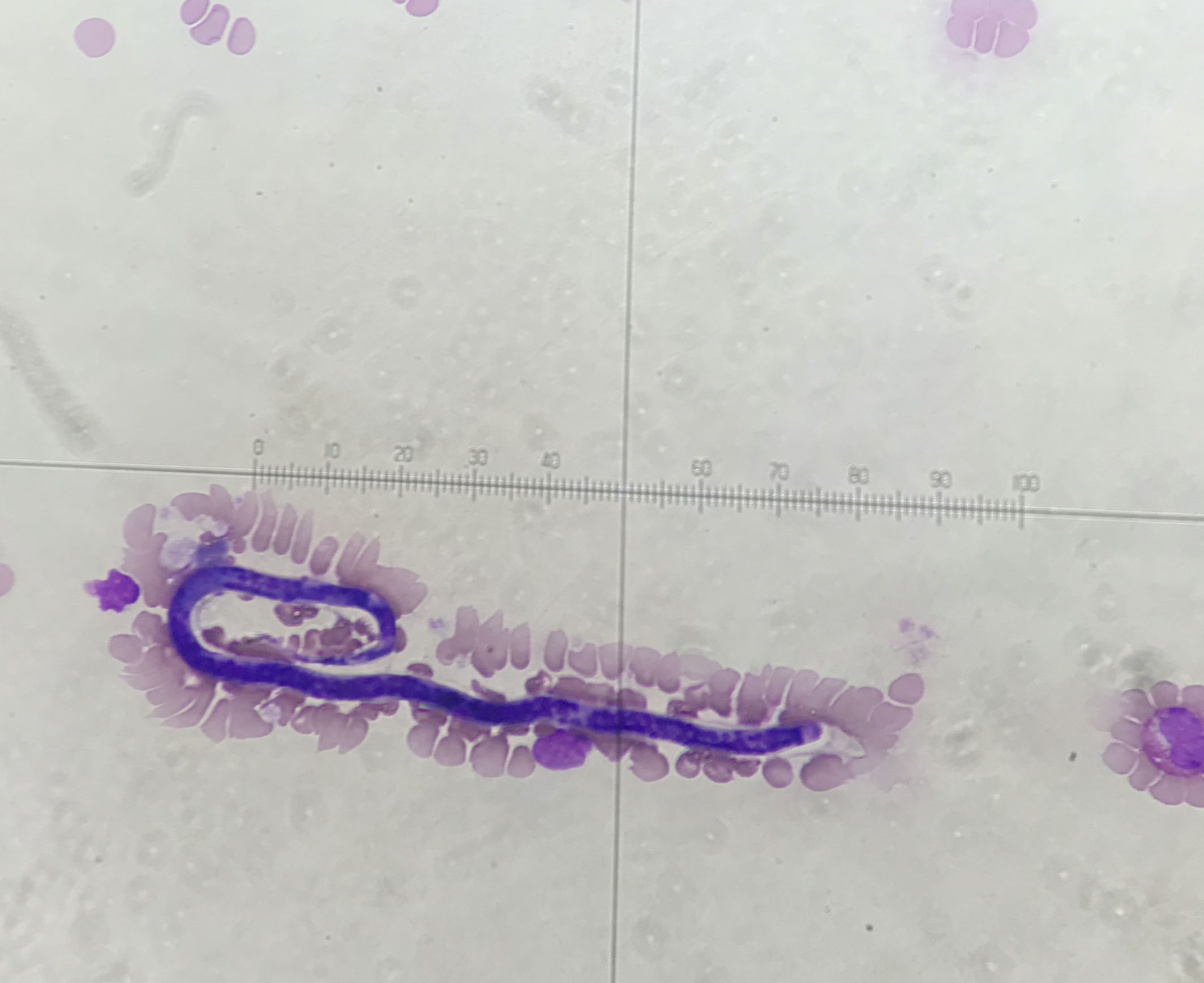This is a Filariae. Let us tell you more about it.

Definition
- Filariae are microscopic roundworms transmitted by arthropods (mosquitos, black flies, or biting midges).
- The primary host of filariae is vertebrates, including humans. Filariae dwell in human blood and tissues.
- They are classified based on vectors, location of adult stages (found in body fluids or tissue), etc.
- They are called microfilariae when they can circulate in blood and microfilariae when they live in lymphatics or other tissues.
Infections symptoms
The incubation period from bite to clinical manifestation can vary from a weeks to months. Manifestations of filariasis are fever, swollen lymph nodes, pain in the affected part, and red streaks. In the case of chronic infection, swelling may become permanent and distorting.
Diagnosis
The first step of filariasis diagnosis is establishing historical exposure in endemic areas. A microfilariae stage can be observed on a thick blood smear. A thick blood smear can be stained usually by Giemsa staining. Stained smear analysis allows observing the characteristics of the microfilariae (size, sheath staining, folding nuclei appearance, location, and size) specific to each species to discriminate them. In the case of tissue filariasis, it can be necessary to analyze the biopsy of infected tissue.
Tip to finding the answer
Borrelia has a similar shape but is smaller and thinner, and Trypanosoma has a flagellum and an undulating membrane at the stage when they are found in the blood.
See you next month for another Quiz 🎲!